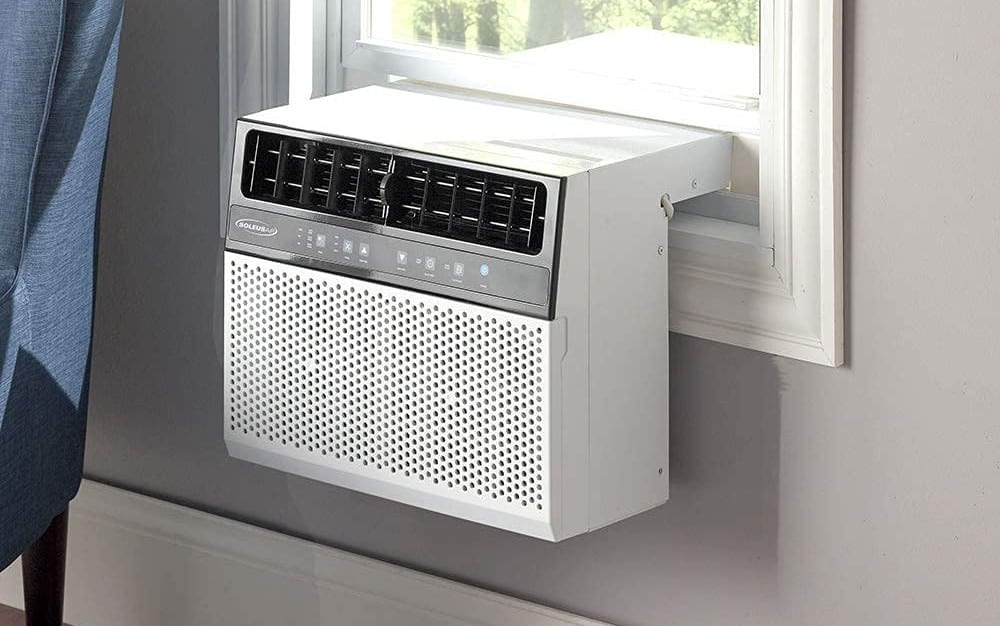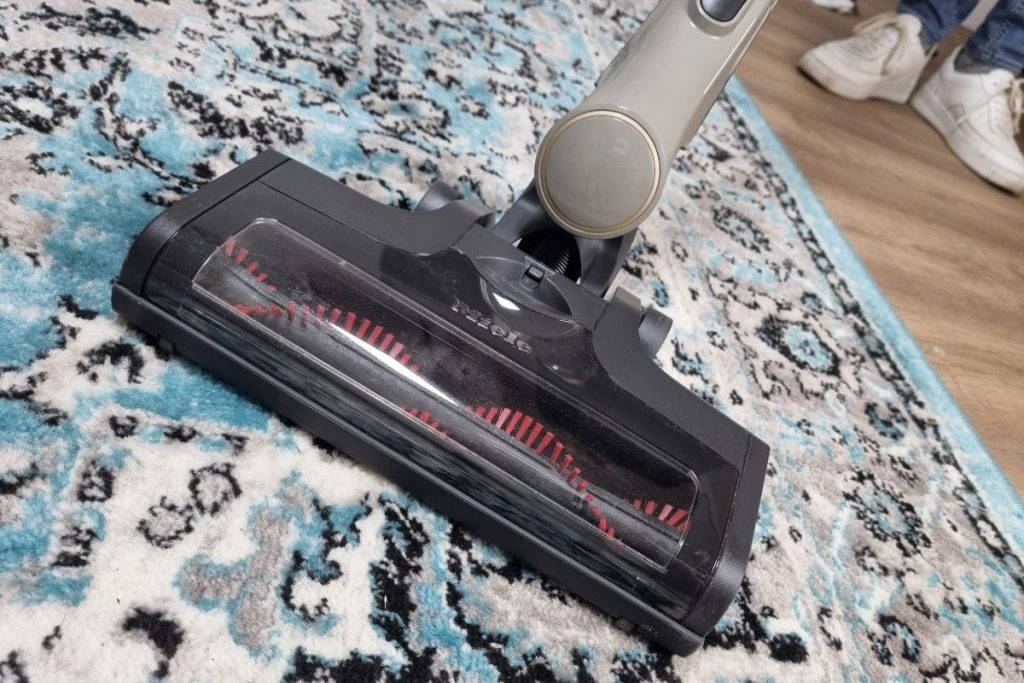7 Best Reusable Home Air Filters In 2024
Sonya Harris Apr 19, 2024 11:05 AM
We independently study, test, and review 7 Best Reusable Home Air Filters products before making recommendations. We’re testing the K&N, Filtrete, Filterbuy, AirThreds for a for a future update to this guide.

Overview
There are many options to pick from when it comes to air filters. To make life easier, you can buy air filters that can be thrown away after a few uses. Convenient yet pricey, disposable air filters can be reprocessed in several ways, making them an expensive option. If you employ less competent filters, you'll have to change them more frequently than if you used more competent filters.
Most of your energy bill goes to paying for heating and cooling. The air filter isn't a big deal, but it keeps the entire system running smoothly. A dirty air filter can impede airflow, preventing the system from operating as expected, and eventually causing it to fail. Airflow can be reduced to dribbles if the air filter is clogged, so check it out.
- SCORE9.4
- BrandFilterbuy
- Prime
- SCORE8.8
- BrandFilterbuy
- Prime
Last update on 2024-04-19 / Affiliate links / Images, Product Titles, and Product Highlights from Amazon Product Advertising API
In order to maintain a clean indoor environment free of allergens and pollution, washable furnace filters are an absolute necessity. Furnace filters help to improve air quality by capturing and neutralizing particulates in the air. Because they remove particulates that obstruct air flow, furnace filters help keep HVAC systems and furnaces working properly. This means that you should use washable furnace filters to protect yourself from the toxins in the air. Therefore, before purchasing this product, it is important to look at its features and functionalities to determine its quality.
Filter Size
In order to keep the heat exchanger clean, the washable furnace filters need to be used with filters of specified sizes and thicknesses, as these factors influence how well the air filter functions. 1 inch and 4 inch filter thicknesses are the most often used sizes. Unfiltered air can pass through the filter and pollute the surrounding environment if it doesn't fit. Using the labeling on the furnace filters, one may determine the filter size. One might seek for the model number of the furnace or HVAC if it is not marked. For this reason, various models may require different filter diameters from the same manufacturer.
Rating Scale
When looking for the best washable furnace filter, pay attention to the filter's rating. The MERV rating, which stands for Minimum Efficiency Rating Value, is important to keep in mind when purchasing furnace filters. The American National Standards Institute (ANSI) has developed a standard testing system. MERV values range from one to sixteen for an efficient filter. More effective filtering against airborne particles is indicated by a higher MERV rating. The higher the MERV rating, the greater the air resistance in the furnace. However, overworking the system might lead to a decline in the filter's efficiency. It is preferable to select a furnace filter with a MERV rating range of 8 to 12 so that the system is protected and the air quality is improved.
Microparticle Performance Rating (MPR) is a second grade scale in addition to the MERV rating. Furnace filters from 3M are graded on a scale that determines how well they remove particles smaller than one micron in diameter. MPR ratings range from 300 to 2800, with the higher numbers indicating better efficiency. A system's efficiency is harmed by a high MPR Rating. MPR should be rated between 1000 and 1900 to get a decent balance of effective filtering performance.
Materials of Construction
Fiberglass is the primary material used in most furnace filters. Flat and thin, they are capable of remove 25% of air pollutants that are between 3 and 10 microns in diameter. Small particles, which make up the majority of dangerous contaminants in the air, cannot be captured effectively by the fiberglass material. The mid-range variants are constructed from cotton or polyester, depending on the type. Because of the wide surface area of the pleated filter, more airborne particles may be captured and filtered. Pleated filters, according to the Environmental Protection Agency, are more effective at removing respirable particles from the air. Increased capacity is required to keep up with the rapid accumulation of debris. The K&N 20x20x1 AC filter is the most long-lasting.
Filter Thickness
The furnace filter is the right size, but when you arrive home, the lid won't shut. The thickness of the filter was the second step, which you've omitted. Filters aren't all made equal in terms of thickness, and there are specific measurements that must be followed. The lid won't close properly if your filter is too thick; this might be frustrating. In order to keep your home clean, you need to make sure that your mattress cover isn't too thin. You can ensure that your filter is as effective as possible by using the correct dimensions and thickness.
Filter Pleats
A pleated filter is more competent and provides long-term safety and protection than an easy-to-use fiberglass filter with no wrinkles. Airflow through the filter is increased because pleats provide a larger surface area to collect pollutants such as allergies and toxins. A pleated filter can also catch tiny particles, especially those that are associated to the scent. If you smoke or have dogs at home, you'll want to invest in a pleated filter to help control odors and keep the air cleaner.
Efficiency Ratings
Smells and other contaminants can be effectively eliminated by using the MERV rating. MERV, or Minimum Efficiency Reporting Value, describes how well a filter removes various types and diameters of particles from the air it circulates through. To remove more pollutants and contaminants, the MERV number must be larger.
Most filters have a MERV rating of 4, however pleated filters typically have a MERV rating of 6. An electrostatic filter typically has a MERV rating of 8, but some of the best have MERV ratings of 12 or more. Your home may be more at risk from chemicals and air pollution if you purchase filters with higher MERV ratings rather than making your own.
Maintenance
Regardless of the type of HVAC air filter you choose, there is some maintenance required. However, washable air filters have additional maintenance requirements.
It is recommended that washable filters be cleaned and dried thoroughly once a month before being reinserted. It's a perfect breeding ground for mold and bacteria if you reinstall a moist air filter. Because disposable filters may be thrown away and replaced with a new one when they become dirty, they don't require any regular maintenance.
Performance
A washable filter will eventually become clogged with particles, even if you clean it monthly. This can lead to costly complications if particles remain trapped in a filter for an extended period of time. Washable air filters have the additional disadvantage of losing their electrostatic charge over time. For the most part, you can keep a washable air filter in your home for a long time before it needs to be replaced.
As a result, a well-cared-for washable HVAC air filter can last between five and ten years before it needs to be changed out.
Cost
The cost of washable air filters is more than that of disposable ones, but they last longer before needing to be changed. Although disposable air filters are less expensive, it is advised that they be replaced at least twice a year with the more expensive, long-lasting versions.
The cost of a product's performance is also taken into account. Disposable air filters, on the other hand, tend to have a higher MERV rating and are more effective in removing contaminants from the air. While determining the most cost-effective HVAC filter for your house, keep these points in mind when making your selection.
Are washable furnace filters any good?
"Are washable air filters worth it?" is a common question. However, they do make a significant impact. There are several contaminants that can be avoided by using a high-quality furnace filter. After installing filters, several of them noticed a considerable improvement in their home's air quality.
What is the best washable air filter?
Is there a single correct answer here? It all comes down to what you want and what you want is different for everyone.
How Do I Know Washable Electrostatic Furnace Air Filters Work?
A number of variables must be taken into consideration. The quality of your indoor air might be affected by the amount of dust present outside your house. When you open and close your door, dust and other debris will enter. A gravel road, a region with high amounts of dust, or times of home improvements can all increase the frequency with which you need to wash them. Owners of pets are more likely to notice an increase in dust and dander in their homes. Airborne pollutants can also be generated by people's hobbies and lifestyles. By leaving the recirculating fan on AUTO, your HVAC system will only run when the temperature setting on your thermostat calls for it. You can't use your furnace filter if your ventilation system isn't working properly. Your fan should be set to "ON" for continual cleaning of the entire house's air.
How Expensive Are Washable Furnace Filters?
From $30 to $100, you may purchase washable furnace filters online. If you don't discover some that ship for free, you'll need to account for shipping and handling costs. You never know when you'll come across a terrific deal. Despite the fact that this is a one-time investment, it's still an excellent price compared to the monthly cost of replacing your furnace filter.
How Often Should You Change Your Filter in Your Furnace?
As a general rule of thumb, it is recommended that 1-2 inch filters be replaced every three months, 4 inches every six months, and 5 inches every year.
How Long Reusable Furnace Do Filters Last?
Recyclables and single-use containers aren't sufficient after removing the prior filter. Washable filters, on the other hand, are a better option for the environment because they can be recycled and re-used for an average of 5-10 years.
The purpose of washable furnace filters is to keep hazardous dirt out of your home. As a result, most of the filters have a similar appearance. If you don't know about the distinctions, you could wind up with the most worthless filter. Make sure you read over the information we've gathered here before making your final decision.























